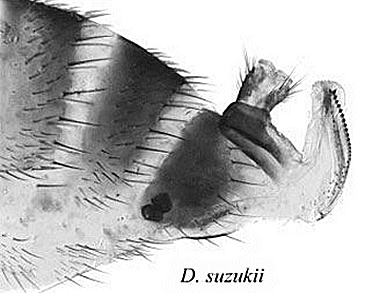It was with great concern that Drosophila suzukii, commonly called the spotted-wing fruit fly, was detected in California in 2008. This was the most serious occurrence of the insect since being observed in Japan in 1916, and its subsequent infestations of China, Korea and Russia.
Since 2008 it has been found infesting fruit across the US, reaching Europe in 2009. Damaged crops include blackberries, blueberries, cherries, peaches, raspberries, strawberries, and grapes, as well as wild fruiting plants. In 2010, for example, up to 80% of strawberry crops in the Alpes-Maritimes region of southern France were lost.
As D. suzukii continues to expand its range, radical steps must be initiated to educate and inform the public as well as formulate management tactics suitable for the crops and growing conditions. The journal Pest Management Science published a collection of eight papers that provides an overview of the insect’s biology, its economic impact, latest findings on how this impact is being managed, and how to educate stakeholders in the right response to the arrival of this invasive insect in new regions of the world.
Denny J. Bruck, USDA ARS Horticultural Crops Research Unit, Corvallis, OR, USA, and colleagues, for example, found that products that performed well in the laboratory bioassay also performed well in the field. This indicates that screening of new chemistries in the laboratory is a worthy exercise. Whereas pyrethoids, organophosphates, or spinosyns provided 5–14 days of residual control of D. suzukii, neonicotinoids are not currently recommended for D. suzukii management.
Image: © SCI (in article by Martin Hauser)
- Pest Management Science – In Focus: Spotted Wing Drosophila,
Volume 67, Issue 11, 2011. - Laboratory and field comparisons of insecticides to reduce infestation of Drosophila suzukii in berry crops,
Denny J Bruck1, Mark Bolda, Lynell Tanigoshi, Jimmy Klick, Joseph Kleiber, Joe DeFrancesco, Beverly Gerdeman, Hollis Spitler,
Pest Managem. Sci. 2011.
DOI: 10.1002/ps.2242




